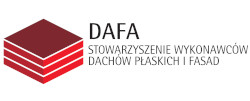Open Access (Artykuł w pliku PDF)
Smoke control systems in modern complex geometry atria
dr hab. inż. Dorota Brzezińska, prof PŁ., Politechnika Łódzka, Wydział Inżynierii Procesowej i Ochrony Środowiska
ORCID: 0000-0002-7509-2849
Maria Brzezińska, Politechnika Łódzka, Wydział Budownictwa, Architektury i Inżynierii Środowiska
ORCID: 0000-0002-9095-817X
Adres do korespondencji: Ten adres pocztowy jest chroniony przed spamowaniem. Aby go zobaczyć, konieczne jest włączenie w przeglądarce obsługi JavaScript.
DOI: 10.15199/33.2023.02.09
Doniesienie naukowe
Streszczenie. W sytuacji pożaru atria stanowią przestrzenie umożliwiające niekontrolowane rozprzestrzenianie się dymu. Stwarza to niebezpieczne warunki ewakuacji ludzi i wymaga stosowania systemów oddymiania. Ich projektowanie odbywa się na podstawie dostępnych standardów obliczeniowych. Współczesne atria posiadają jednak niejednokrotnie dodatkowe elementy architektoniczne, np. poprzeczne balkony, mogące zakłócać działanie standardowych systemów.
Słowa kluczowe: wentylacja oddymiająca; atrium; ewakuacja ludzi.
Abstract. Atria are spaces in buildings that enable the uncontrolled spread of smoke in the event of a fire. This creates dangerous conditions for people evacuation and requires smoke control systems implementation. Their designing is realized on standard calculations. But modern atria often have additional architectural elements, such as transverse balconies, which may interfere with the operation of the standard systems.
Keywords: smoke ventilation; atrium; evacuation of people.
Literatura
[1] Brzezińska D. Wentylacja pożarowa obiektów budowlanych. Wydawnictwo Politechniki Łódzkiej. 2015.
[2] Rozporządzenie Ministra Infrastruktury z 12 kwietnia 2002 r. w sprawie warunków technicznych, jakim powinny odpowiadać budynki i ich usytuowanie (Dz.U. 2019, poz. 1065 z późn. zm.).
[3] Morgan HP, Ghosh BK, Garrad G. Design Methodologies for Smoke and Heat Exhaust Ventilation; Building Research Establishment (BRE): London, UK; American Society of Heating, Refrigerating and Air-Conditioning Engineers & Society of Fire Protection Engineers: Atlanta, GA, USA, 1999.
[4] Klote JH, Milke JA. Principles of Smoke Management; American Society of Heating, Refrigerating and Air-Conditioning Engineers & Society of Fire Protection Engineers: Atlanta, GA, USA, 2002.
[5] Klote JH, Milke JA. Design of Smoke Management Systems; Amer Society of Heating: Washington, DC, USA, 1992.
[6] Pongratz C, Milke JA, Trouve A. CFD Study Atrium Smoke Control. ASHRAE Trans. 2016; 122: 10 – 26.
[7] Doheim RM, Yohanis YG, Nadjai A, Elkadi H. The impact of atrium shape on natural smoke ventilation. Fire Saf. J. 2014; 63: 9 – 16.
[8] Ayala P, Cantizano A, Rein G, Vigne G, Gutiérrez-Montes C. Fire Experiments and Simulations in a Full-scale Atrium Under Transient and Asymmetric Venting Conditions. Fire Technol. 2016; 52: 51 – 78.
[9] Rundle CA, Lightstone MF, Oosthuizen P, Karava P, Mouriki. E. Validation of computational fluid dynamics simulations for atria geometries. Build. Environ. 2011; 46: 1343 – 1353.
[10] Kerber S, Milke JA. Using FDS to simulate smoke layer interface height in a simple atrium. Fire Technol. 2007; 43: 45 – 75.
[11] Volley MK. Verification and validation— How determine the accuracy of fire models. Fire Prot. Eng. 2007. Available online: https: //www. nist. gov/publications/verification-and-validation-how-determine-accuracy-fire-models.
[12] Nuclear Regulatory Commission Office of Nuclear Regulatory Research (RES).Verification & Validation of Selected Fire Models for Nuclear Power Plant Applications; Main Report; 2007; Volume 1.Available online: https://www.nrc. gov/ reading-rm/doccollections/nuregs/staff/ sr1824/s1/index.html.
[13] Baolati J, Li K, Zou Y, Frank K, Hare G, Zhang J, Ge F. Large eddy simulation of room fire spread using a mediumscale compartment made of medium density fibreboard (MDF) panels. Build. Simul. 2022; 15: 495 – 510.
[14] BSI, BS 7346-4. Components for smoke and heat control systems – Part 4: Functional recommendations and calculation methods for smoke and heat exhaust ventilation systems, employing steady-state design fires – Code of practice. 2003.
[15] NFPA, NFPA 204 Standard for Smoke and Heat Venting. 2021.
Przyjęto do druku: 09.01.2023 r.
Materiały Budowlane 02/2023, strona 35-38 (spis treści >>)




























